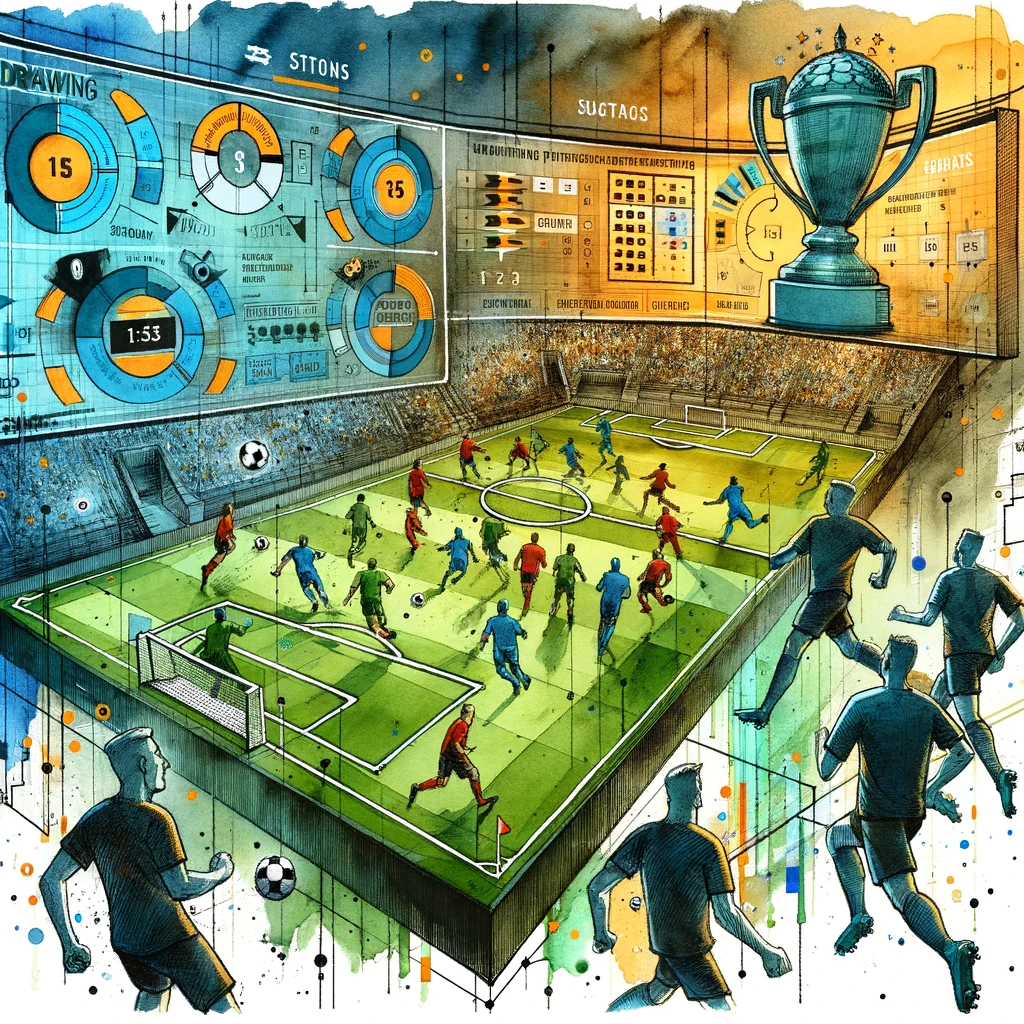
Unlocking the Secrets of Soccer Performance: Insights from the UEFA Champions League
Soccer coaching and player development are constantly evolving fields. The latest research, “The seven phases of match status differentiate the running performance of soccer players in UEFA Champions League,” published in Nature, offers groundbreaking insights that could significantly influence these domains.
The Core of the Study
The study dives into the running performance of professional soccer players, focusing on how their performance varies across different game phases. These phases are categorized based on whether the team wins, loses, or draws and whether this status changes or remains the same throughout the match.
The Seven Phases
Researchers identified seven distinct phases:
- Drawing to Winning (DW): This phase occurs when a match progresses from a draw to a win for a team. It’s a critical transition, indicating a team’s ability to capitalize on opportunities to turn the game in their favor. Players tend to exhibit heightened activity and aggressive play to seize control of the match.
- Losing to Drawing (LD): In this phase, a team recovers from a losing position to secure a draw. This scenario requires resilience and strategic gameplay, as the team must overcome the deficit while preventing further goals from the opponent.
- Winning to Winning (WW): This phase is about maintaining a winning lead. Teams in the WW phase focus on consolidating their advantage, often by controlling the game tempo and managing possession to keep the opposition at bay.
- Drawing to Drawing (DD): In this evenly poised phase, both teams are in a deadlock, with neither side gaining the upper hand. It’s a phase of uncertainty and tactical maneuvering, where each team looks for a breakthrough while guarding against conceding.
- Losing to Losing (LL): Here, a team remains in a losing position, struggling to reverse the game’s momentum. This phase often demands a reevaluation of tactics and increased offensive efforts to change the game’s course.
- Drawing to Losing (DL): This phase marks a downturn for a team, where they go from a neutral drawing state to a losing position. It’s a challenging period that tests the team’s mental and tactical resilience.
- Winning to Drawing (WD): In this phase, a team loses its winning advantage and falls back to a draw. This can happen due to a shift in momentum, a lapse in concentration, or a resurgence from the opposition. It’s a crucial juncture in a match, often leading to intensified efforts to regain the lead.
Key Findings
- Highest Activity Levels: Players showed the highest running performance in phases like DW, DL, and LL. This suggests that players exert more when they’re trying to change the game’s status, especially from a neutral or losing position.
- Phase Occurrence: Interestingly, the phases leading to a change in the match status (like DW and DL) often occurred in the first half of the game. In contrast, phases maintaining the status quo (like DD, LL, and WW) were more common in the second half.
Implications for Soccer Coaching and Player Development
Training Drills and Game Strategies
- Tailored Training: Coaches can use these insights to design training drills that mimic specific match phases. For example, simulating DW or DL situations in practice could prepare players to exert more when trying to turn a draw into a win.
- Focus on Game Phases: Understanding when certain phases are likely to occur can help coaches strategize better. For instance, preparing for DW and DL phases in the first half and adopting different tactics for the second half when maintaining the status becomes crucial.
Analyzing Player Performance
- Position-Specific Insights: The study highlights variations in running performance based on player positions. Coaches can use this data to tailor fitness and skill training for different roles.
- Performance Metrics: This research underscores the importance of analyzing high-intensity running and total distance covered as key performance metrics in soccer.
Inspiring Further Research and Application
The study opens avenues for a more detailed analysis of soccer performance, integrating technical, tactical, and physical aspects. Coaches and players at all levels can benefit from these insights, potentially changing how training and matches are approached.
Aspiring soccer coaches, players, and enthusiasts should delve into this study to understand the nuances of match phases and their impact on player performance. Integrating these findings into training and match strategies makes the potential for enhancing soccer performance immense.
Are you ready to delve deeper into the science and strategy of soccer?
This Week in Soccer offers you a unique blend of expert analysis, engaging infographics, and practical insights. Subscribe to our newsletter and stay ahead of the game with the latest in soccer analytics and coaching strategies. Make the move from spectator to strategist. Subscribe now!

